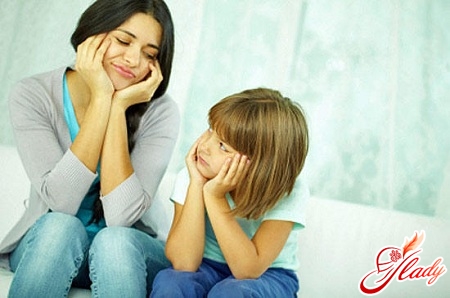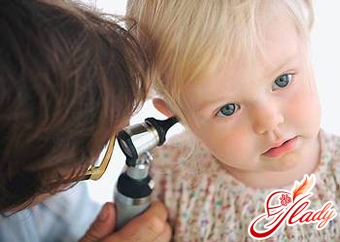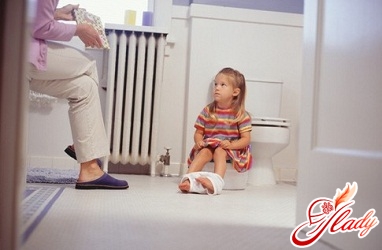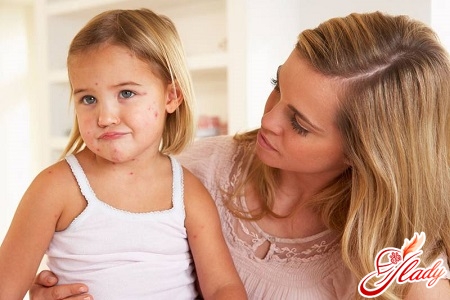
The skin is the body's first protective barrier.It reflects attacks of pathogenic factors, bacteria, viruses, participates in regulation of temperature and water balance and performs many other important functions. Any changes in the skin are a reason to be wary, find out the causes and eliminate them. A rash on a child's body is a local or general transformation of the color, structure and appearance of the skin, not typical of a healthy organ. A rash in children is not always a manifestation of pathology or a sign of illness. It can be a normal response to the influence of an external irritant, but often it indicates the appearance of disorders in the body. There are more than a hundred known causes of rashes in children. Among them are diseases of internal organs, infectious, skin, parasitic, hereditary diseases of varying severity and danger, allergic processes. The characteristics of changes in the skin have been studied in detail and qualified by medical science and in many cases are characteristic of certain childhood diseases. A distinction is made between primary and secondary lesions of rashes. Rashes are classified by morphology (color, size, consistency, appearance, topography). Rashes can be monomorphic or polymorphic. Monomorphic rash - consists of the same type of primary elements, for example, spots, blisters, roseola, and polymorphic - of several. Rashes can affect the epithelial layer of the skin, but can also be deeper, affecting the dermis layer and underlying tissues with the formation of ulcers and erosions. It can be difficult to understand this, but, as a rule, as small children grow up, mothers become authoritative specialists, because one of the pillars of knowledge is practice.
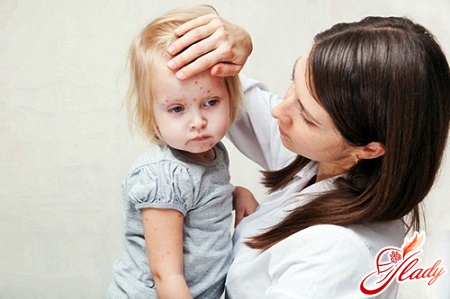
Physiological skin rashes in infants
The skin of infants is especially prone to the appearance ofrashes. During the first months after birth, the formation of the skin continues, which can be accompanied by the appearance of various rashes on the body of infants, which doctors consider quite physiological. Such conditions include the "vascular phenomenon of newborns" - marbling of the dermis. Every tenth child up to six months of age, with a slight decrease in air temperature, pale spots appear, which disappear when warmed up. This is due to a delay in the expansion of capillaries and small vessels due to age-related underdevelopment of the hypothalamus and does not require special measures. Almost half of children experience toxic erythema in the first three days after birth. A vesicular-pustular rash appears on the baby's body, with the exception of the feet and palms - swollen red spots and blisters that gradually begin to look like mosquito bites. This is a manifestation of infection with herpes, candida or staphylococcus, often mistaken for an allergic reaction, usually passes within a week, without requiring treatment. Almost every second newborn has sebaceous cysts in the form of white or yellow bubbles about 2 mm in diameter on the face, and sometimes on the body, genitals and mucous membranes. And every fifth - on the forehead and cheeks there are acne - comedones, bubbles or pimples. They disappear without a trace by about 3 months, when the excretory functions of the sebaceous glands are established. In the first month, 40% of newborns have sweat glands and ducts that do not work at full capacity. Accumulations of sweat on the skin: on the chest, neck, in skin folds - form vesicles. These are small bubbles with a transparent liquid or pimples of white or red color. If sweat ducts are blocked in the deep layers of the dermis, allergic phenomena develop, climatic hyperhidrosis, or red prickly heat - blisters with red liquid appear. They quickly dry out and peel off, causing severe itching. The peculiarities of infant skin require strict adherence to hygiene rules and temperature conditions. But even the most caring mothers know what diaper rash, prickly heat and diaper dermatitis are in infants. They appear even with impeccable care, especially in hot weather, and, without posing a danger to the child, they cause him anxiety, making him irritable and whiny.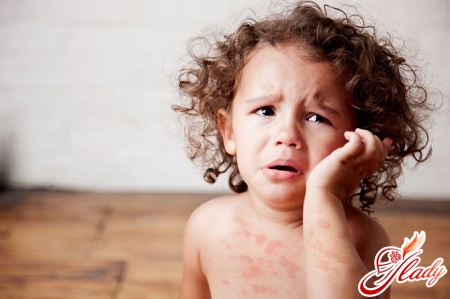
Anxiety pigmentation: infectious childhood diseases
Skin rashes on the child are accompanied byнескольким инфекционным заболеваниям. Особенности сыпи: внешний вид, локализация, характер и время распространения от начала болезни, — во многом помогают определить диагноз. Краснуха, корь, ветряная оспа, скарлатина при первых проявлениях могут иметь схожие признаки. Коварство детских инфекционных болезней, сопровождающихся специфическими изменениями кожных покровов, в том, что начало их походит на обычные острые вирусные инфекции и ангины. При неблагоприятном исходе они часто провоцируют тяжелые осложнения: нефрит, энцефалит, пневмонию. Важно своевременно выявить тревожные признаки и вызвать врача. При нормальном течении кори, краснухи и ветрянки нет необходимости в госпитализации или специфическом лечении. Достаточно обеспечить ребенку постельный режим и выполнение рекомендаций врача, изолировать его на время активности вируса. Малышам до достижения годовалого возраста можно сделать прививки от краснухи и от кори. Это не устраняет опасность заболевания полностью, но дает гарантию его более спокойного течения и снимает угрозу осложнений. У переболевших детей иммунитет сохраняется пожизненно. И в наше время дети часто болеют корью… Корь — одно из самых распространенных острых детских заболеваний, по данным ВОЗ, почти 95 % населения планеты переболело корью. Пик заболеваний корью — конец зимы, а наиболее часто вспышки болезни происходят в детских садах и младших классах школ. Инкубационный период — время с момента попадания вируса в организм до появления выраженных симптомов заболевания — длится от одной до двух недель. Начало болезни происходит резко: повышается температура, появляются насморк, лающий кашель, развиваются конъюктивит и светобоязнь. Характерный признак кори — беловатые высыпания в ротовой полости, появляющиеся второй-третий день после подъема температуры. Вслед за ними, через 1-2 дня, мелкая розоватая сыпь распространяется по телу: сначала за ушами и на лбу, затем на лице, шее, постепенно охватывая все тело и конечности и увеличиваясь в размерах. Такое последовательное развитие сыпи очень характерно. Сыпь в виде пятен и папул при тяжелой форме болезни становится похожей на геморрагическую — образования почти круглой формы слегка возвышаются над поверхностью кожи. При появлении они имеют диаметр 3-5 мм, затем могут увеличиваться до 15 мм и сливаться в обширные сплошные участки — эритематозные пятна, особенно на лице и верхней части туловища. Через два или три дня наступает пик максимального высыпания, который сопровождается подъемом температуры до 40,5 °С. Через 4-7 дней сыпь постепенно исчезает, оставляя шелушащиеся участки коричневатой пигментации, которые проходят через 7-10 дней. Корь часто дает осложнения, которые могут протекать в тяжелой форме: отит, бронхопневмонию, воспаление шейных лимфоузлов, ларингит и энцефалит. Контагиозный период (когда больной заразен для окружающих) при кори начинается с первого дня повышения температуры и заканчивается на 4-5 день кожных высыпаний (с 11 по 16 день после инфицирования). Специального лечения корь не требует, обычно ограничиваются симптоматической терапией, диетой с преобладанием жидкой пищи и соблюдением постельного режима. … а также краснухой и ветрянкой Очень распространенное инфекционное заболевание — коревая краснуха. В основном краснухой заболевают дети в возрасте от 3 до 15 лет. Она менее заразна, чем корь, но представляет большую угрозу для беременных: может привести к выкидышам или, с 50%-ой вероятностью — к рождению детей с тяжелыми пороками (слепотой, глухотой, аномалиями развития сердца и головного мозга). Начинается болезнь с небольшого повышения температуры, насморка, головной боли, иногда — с конъюнктивита, но менее выраженного, чем при заболевании корью. На затылке, за ушами, на задней стороне шеи увеличиваются лимфатические узлы, а на мягком небе образуются красные пятнышки. Многочисленные мелкие пятна сыпи (3-7 мм в диаметре) заметны в первый же день болезни — на лице, шее и внутренних сгибах конечностей, за несколько часов проявляются на всем теле. Кожа вокруг пятен может быть красной, и сыпь часто принимают за скарлатинозную. Высыпания сохраняются около трех суток, в это время держится повышенная температура. В некоторых случаях сыпь бывает почти незаметной, а иногда — единственным симптомом краснухи. В отличие от кори, при краснухе высыпания локализованы на сгибах конечностей, спине, пояснице, ягодицах и меньше выражены на лице, а этапность их появления не прослеживается. Ветряная оспа, или ветрянка, начинается повышением температуры до 39 °С, на 2-3 сутки появляется характерная сыпь — мелкие пузырьки-везикулы размером до 5 мм. Сначала их немного и они возникают на голове и лице, затем на туловище и постепенно охватывают руки и ноги, оставляя неповрежденными ступни и ладони. Появление новых пузырьков сопровождается повышением температуры. Высыпания при ветрянке претерпевают четкие изменения: красные пятна превращаются в узелки размером 1-5 мм, за несколько часов они наполняются жидкостью, превращаясь в везикулы, окруженные покрасневшей кожей. Пузырьки лопаются, подсыхают до буроватых корочек, которые постепенно отходят. Этому циклу сопутствует зуд, особенно сильный на стадии пузырьков и свежих корочек. Если эти корочки удалить принудительно — на коже остаются рубцы — оспины. 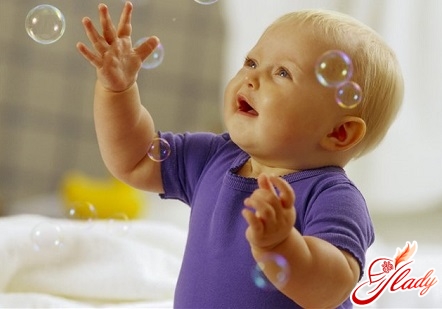 Additional danger of infectious erythemachildren are mostly ill, more often in winter and spring. When infected, against the background of malaise, chills, headache, the child is bothered by myalgia. The next phase of the disease comes after 3 weeks with rashes on the cheekbones, looking like red raised dots that merge into bright symmetrical papular spots, reminiscent of slap marks. Over the next two days, the entire surface of the body is quickly covered with swollen red spots with a paler center. The rash usually looks like lace, sometimes it looks like measles or hemorrhagic and can be accompanied by itching. After a week, the skin clears up, but for some time, especially in the sun or after water procedures, relapses are possible. In children with good immunity, the infection goes away without treatment. Sudden exanthema (roseola) is also a viral infection, infants and young children are susceptible to it. The disease begins with a sudden jump in temperature to 39 °C and above, and the child's skin becomes covered with pinkish convex rashes of the allergic type, especially abundant on the neck and torso. They last less than a day. Associated symptoms of exanthema may include loose mucous stools, swelling of the cervical and ear lymph nodes, and less often, an enlarged liver or spleen.
Additional danger of infectious erythemachildren are mostly ill, more often in winter and spring. When infected, against the background of malaise, chills, headache, the child is bothered by myalgia. The next phase of the disease comes after 3 weeks with rashes on the cheekbones, looking like red raised dots that merge into bright symmetrical papular spots, reminiscent of slap marks. Over the next two days, the entire surface of the body is quickly covered with swollen red spots with a paler center. The rash usually looks like lace, sometimes it looks like measles or hemorrhagic and can be accompanied by itching. After a week, the skin clears up, but for some time, especially in the sun or after water procedures, relapses are possible. In children with good immunity, the infection goes away without treatment. Sudden exanthema (roseola) is also a viral infection, infants and young children are susceptible to it. The disease begins with a sudden jump in temperature to 39 °C and above, and the child's skin becomes covered with pinkish convex rashes of the allergic type, especially abundant on the neck and torso. They last less than a day. Associated symptoms of exanthema may include loose mucous stools, swelling of the cervical and ear lymph nodes, and less often, an enlarged liver or spleen.
Allergy and its consequences
Children often experience allergic skin diseases.rashes, which are caused by the immaturity of their immune system. Allergic reactions are the immune system's response to an external irritant. These can be food products, household chemicals, toys, plants, insect bites, medications, and much more. Allergic reactions can occur even after short-term contact with an irritant, such as nettles or jellyfish. Allergic phenomena begin suddenly, often accompanied by a severe runny nose, watery eyes, and itching. Irritations, red spots, and large raised blisters appear on certain areas of the skin or on the entire body. A rash in a child may be accompanied by swelling of the face and joints. In especially severe cases of an allergic reaction, with swelling of the mucous membranes of the gastrointestinal tract, nausea and vomiting are possible, and swelling of the nasopharynx and tongue can cause suffocation and even allergic shock. Urticaria is an allergic disease, its cause is the increased sensitivity of body tissues to certain selective substances. The action of the allergen increases the permeability of the walls of the skin capillaries, and excess fluid enters the dermis, causing multiple edemas of the papillary layer of the dermis, which leads to the formation of blisters framed by reddened skin. Urticaria can be caused by some foods (strawberries, citrus fruits, shellfish), medications, inhaled substances (pollen or household dust), skin contact with certain materials, plants, sunlight or cold, as well as insect bites, parasites and even emotional stress. Chronic allergic reactions can lead to unpleasant skin diseases - toxicoderma. In a mild form, the disease is accompanied by a rash on the body like urticaria. In severe forms, pustules, vascular or hemorrhagic spots form on the skin, and erythoderma may also develop - thinning of areas of the superficial layers of the skin. Of course, there are many other reasons that cause changes in children's skin: from relatively harmless ones, such as mosquito bites, to dangerous ones - scarlet fever, meningitis, psoriasis. It is not always possible to protect children from diseases, but efforts to strengthen the child's immunity will reduce the risk of infection several times.





